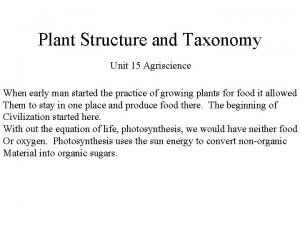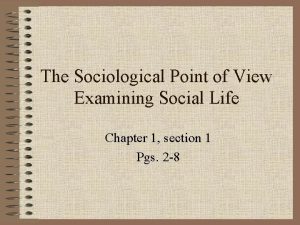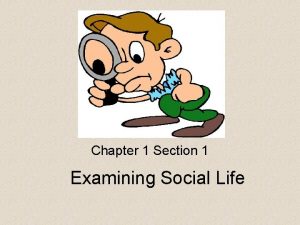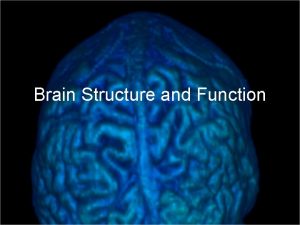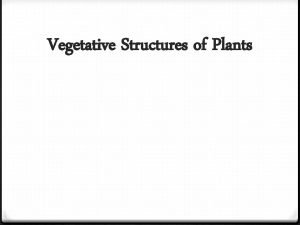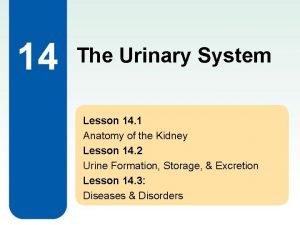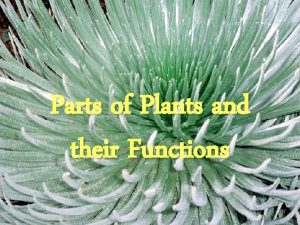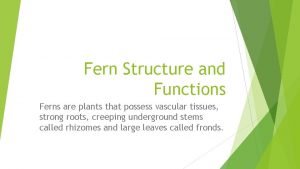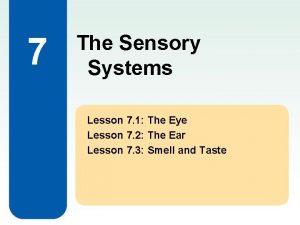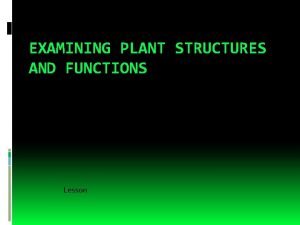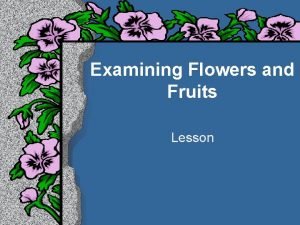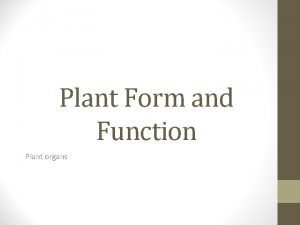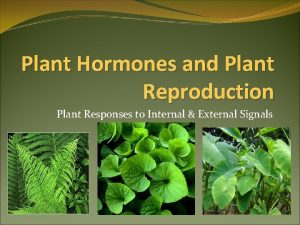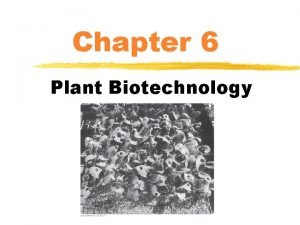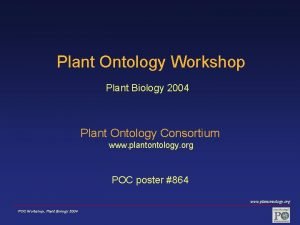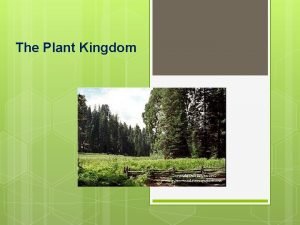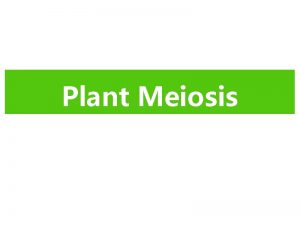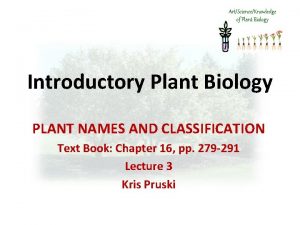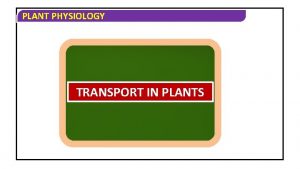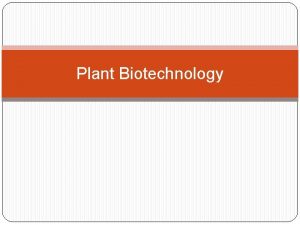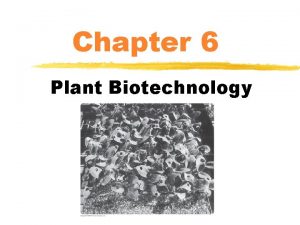EXAMINING PLANT STRUCTURES AND FUNCTIONS Lesson Student Learning








































- Slides: 40

EXAMINING PLANT STRUCTURES AND FUNCTIONS Lesson

Student Learning Targets I can describe the cellular structure of plants. I can identify the major parts of plants and explain their functions.

Terms Alternate leaf arrangement Bulb Cell specialization Cladophyll Compound leaf Corm Fibrous root system Flower Fruit Leaf Multi-cellular organism

Terms Opposite leaf arrangement Organ system Reproductive parts Rhizome Root Seed Simple leaf Stem Stolon Taproot system Tendril Tissue Tuber Vegetative parts Whorled leaf arrangement

Interest Approach Can you name the different parts of this plant? How is this useful to humans?

What is the cellular structure of plants? Cells are the structural basis of all living organisms. A cell is a tiny structure that forms the basic building blocks of plants. All organisms are made of one or more cells. Protoplasm in cells carries out life processes.

I can describe the cellular structure of plants.

What is the cellular structure of plants? Plants are multi-cellular organisms, meaning that they have many cells. Some cells have specific functions. Cell specialization is the presence of cells that perform unique activities for a plant. Flowers, leaves, roots, and stems are made of specialized cells.

What is the cellular structure of plants? Cells are formed into groups that work together. Tissue is formed by groups of cells that are alike in activity and structure. An organ is formed by tissues that work together to perform specific functions. An organ system is a group of organs that works together to perform a function.

Cell structure is the organization of the material Plantforms cells have major parts: that a three cell. wall, nucleus, and cytoplasm. The cell wall surrounds the cell and controls the movement of materials into and out of the cell. The nucleus is near the center of a cell and contains protoplasm, chromosomes, and other structures that control cell activity.

Cell structure is the organization of the material The cytoplasm solution inside that forms isaa thick cell wall surrounding the nucleus. Plant cells have many additional parts, including: chloroplasts, nucleolus, vacuole, mitochondria, and golgi body.

Plant cells

I can identify the major parts of plants and explain their functions.

What are the major parts of plants? Plants are comprised of vegetative and reproductive parts.

The major vegetative parts of plants are stems, leaves, and roots.

The major reproductive parts of plants are flowers, seed, and fruit.

The major vegetative parts of plants are stems, A stem is the central axis that supports the leaves, connects them with the roots, and transports water and other materials between the leaves and roots. Stems vary widely in appearance based on the species of plant. Stems may be vertical or horizontal and modified for climbing and to store water and food.

Specialized Kinds of Stems Rhizome—A rhizome is an underground stem that grows horizontally. It may grow adventitious roots and stems to develop as a separate plant. Examples include iris and wild ginger.


Specialized Kinds of Stems Tuber—A tuber is an enlarged part of a stem that grows underground. A tuber can develop into a separate plant. Examples include potatoes and yams


Specialized Kinds of Stems Tendril—A tendril is a threadlike leafless growth on a stem that attaches itself around other stems and objects. Tendrils typically grow in a spiral shape. attaching itself, it holds the stem in position. Vines and climbing plants often have tendrils.

Tendril Examples are sweet peas and cucumbers.

Specialized Kinds of Stems Stolon—A stolon is an above ground stem that grows horizontally and propagates new plants. Strawberries are well known as examples of plants that multiply using stolons.


Specialized Kinds of Stems Bulb—A bulb is an underground food storage organ consisting of flattened, fleshy stem-like leaves with roots on the lower side. Examples of bulbs are onions and daffodils.


Specialized Kinds of Stems Corm—A corm is a food storage structure at the end of a stem that grows underground. It is an enlarged or swollen stem base. Examples include gladiolusand crocus.


Specialized Kinds of Stems Cladophyll—A cladophyll is a leaflike branch that resembles a leaf. It is also called a cladode. A cladophyll functions much like a leaf.


A root is the part of a plant that grows in the soil or other media. Roots anchor plants, absorb water and minerals, and store food. The root system structure varies widely depending on the species of plant. Overall, roots can be classified as three major types: A. Fibrous root and B. Tap root Taproots/ Fibrous

A fibrous root system is made of many small roots and spread throughout the soil. Common in monocots

A taproot system is made of one primary root with a number of small secondary roots. Common in dicots.


A leaf is typically a large, flat, green organ attached to the stem. Leaves carry out photosynthesis, transpiration, and may store food. Shape, arrangement, and other features vary widely with the species of plant. There are two major kinds of leaves and three major types of arrangements:

A simple leaf has only one blade

A compound leaf is divided into two or more leaflets

Leaf attachment also varies. This refers to the spacing and arrangement of leaves on the stem of a plant. The major kinds of attachment are: alternate, opposite and whorled.

 Sls
Sls Data preparing exploring examining and displaying
Data preparing exploring examining and displaying Function of homologous structure
Function of homologous structure Unit 15 plant structures and taxonomy
Unit 15 plant structures and taxonomy The comparative study of past and present cultures
The comparative study of past and present cultures Two people can have identical handwriting.
Two people can have identical handwriting. Sociology relation with other social sciences
Sociology relation with other social sciences Examining social life practice
Examining social life practice Acquiring spiritual knowledge part 1
Acquiring spiritual knowledge part 1 What conclusions can you make from examining the geochart?
What conclusions can you make from examining the geochart? Cuadro comparativo e-learning m-learning b-learning
Cuadro comparativo e-learning m-learning b-learning Tronsmo plant pathology and plant diseases download
Tronsmo plant pathology and plant diseases download Tronsmo plant pathology and plant diseases download
Tronsmo plant pathology and plant diseases download Albugo eye
Albugo eye Limbic system structures and functions
Limbic system structures and functions Organelle graphic organizer answer key
Organelle graphic organizer answer key Limbic system structures and functions
Limbic system structures and functions Eukaryotic cells
Eukaryotic cells Primary root and secondary root
Primary root and secondary root Monopolistic competition examples
Monopolistic competition examples Lesson 14.2 male and female urinary structures
Lesson 14.2 male and female urinary structures Lesson 7 - review sentence structures and comma rules
Lesson 7 - review sentence structures and comma rules Parts of plant
Parts of plant Plants and their parts
Plants and their parts Animal and plant cell diagram
Animal and plant cell diagram Structure of ferns
Structure of ferns 6 parts of a plant and their functions
6 parts of a plant and their functions Plant introduction in plant breeding
Plant introduction in plant breeding Plant introduction in plant breeding
Plant introduction in plant breeding Plant introduction in plant breeding
Plant introduction in plant breeding Lesson 7.1 internal structures of the eye
Lesson 7.1 internal structures of the eye Student reflection on learning and development
Student reflection on learning and development Were you at the beach last weekend
Were you at the beach last weekend We ...... a big piece of wood last saturday. (see)
We ...... a big piece of wood last saturday. (see) National clearinghouse student tracker
National clearinghouse student tracker Class maths student student1 class student string name
Class maths student student1 class student string name National student clearinghouse student tracker
National student clearinghouse student tracker Student freckle. com
Student freckle. com Good morning, students.
Good morning, students. Evaluating functions
Evaluating functions Evaluating functions and operations on functions
Evaluating functions and operations on functions



